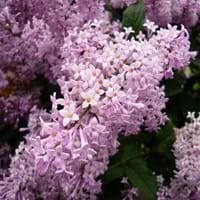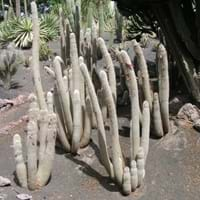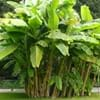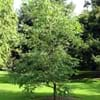Life Span
Perennial
Perennial
Type
Flowering Plants, Shrubs
Cactus
Origin
Europe, Northern America
Central America, South America, Brazil
Types
Persian lilac, Dwarf Korean lilac, Tree lilacs, Chinese lilac, Himalayan lilac
Not Available
Number of Varieties
Not Available
Habitat
Roadsides, Rocky areas, Thickets
Desert, Temperate Regions
USDA Hardiness Zone
3-7
12-15
Sunset Zone
A1, A2, A3, 1a, 1b, 2a, 2b, 3a, 3b, 4, 5, 6, 7, 8, 9, 10, 11, 14
12, 13, 21, 22, 23, 24
Habit
Upright/Erect
Upright/Erect
Flower Color
Blue, Pink, Purple, Red, White, Yellow
Red, Orange, Salmon
Flower Color Modifier
Not Available
Not Available
Fruit Color
Brown
Not Available
Leaf Color in Spring
Dark Green
Not Available
Leaf Color in Summer
Green
Not Available
Leaf Color in Fall
Green, Lemon yellow, Sandy Brown
Not Available
Leaf Color in Winter
Not Available
Not Available
Leaf Shape
Heart-shaped
Succulent
Plant Season
Spring
Spring, Summer, Fall, Winter
Sunlight
Full Sun, Partial shade
Full Sun
Growth Rate
Medium
Not Available
Type of Soil
Loamy, Sandy
Loam, Sand
The pH of Soil
Acidic, Alkaline, Neutral
Acidic, Neutral, Alkaline
Soil Drainage
Well drained
Well drained
Bloom Time
Spring
Spring, Summer
Tolerances
Not Available
Drought
Where to Plant?
Ground, Pot
Container, Ground, Pot
How to Plant?
Grafting, Seedlings, Stem Planting, Transplanting
Seedlings, Stem Cutting
Plant Maintenance
Medium
Medium
Watering Requirements
Keep the ground moist but not water-logged, Over-watering can cause leaf problems or root diseases, Prefer drip-irrigation instead of Over-head watering, Requires a lot of watering, Water twice a day in the initial period, Water when soil is dry
Reduce watering in winter
In Summer
Lots of watering
Lots of watering
In Spring
Moderate
Moderate
In Winter
Average Water
Average Water
Soil pH
Acidic, Alkaline, Neutral
Acidic, Neutral, Alkaline
Soil Type
Loamy, Sandy
Loam, Sand
Soil Drainage Capacity
Well drained
Well drained
Sun Exposure
Full Sun, Partial shade
Full Sun
Pruning
Prune after flowering, Prune prior to new growth, Remove dead leaves, Remove dead or diseased plant parts
No pruning needed, Remove damaged leaves, Remove dead branches, Remove dead leaves
Fertilizers
All-Purpose Liquid Fertilizer
Fertilize the soil before planting, slow-release fertilizers
Pests and Diseases
Powdery mildew, Slugs, Snails
Bacterial Stem Rot, fungus, Mealybugs, Spider mites
Plant Tolerance
Drought
Drought
Flower Petal Number
Double
Single
Foliage Texture
Medium
Bold
Foliage Sheen
Matte
Not Available
Attracts
Butterflies, Hummingbirds
Hummingbirds
Allergy
Eye irritation, Itchy eyes, Runny nose
Not Available
Aesthetic Uses
Beautification, Bouquets, Showy Purposes, Used for decorating walls, fences, gates, hedges, etc.
Landscape Designing, Showy Purposes, Wild gardens
Beauty Benefits
Not Available
Not Available
Environmental Uses
Air purification
Air purification
Medicinal Uses
Fever, Treat Parasitic Intestinal Worms
No Medicinal Use
Part of Plant Used
Flowers
Whole plant
Other Uses
Air freshner, Oil is used for aromatherapy, Oil is used in perfume, soaps, creams, etc., Used As Food, Used as Ornamental plant, Used for fragrance
Florist trade and landscaping, Used as Ornamental plant
Used As Indoor Plant
Yes
No
Used As Outdoor Plant
Yes
Yes
Garden Design
Cutflower, Edging, Mixed Border, Topiary / Bonsai / Espalier
Container, Houseplant, Rock Garden, Wall
Botanical Name
Syringa
Cleistocactus strausii
Common Name
Lilac
silver torch or wooly torch
In Hindi
बकाइन
Cleistocactus strausii
In German
Flieder
Cleistocactus strausii
In French
lilas
Cleistocactus strausii
In Spanish
lila
Cleistocactus strausii
In Greek
πασχαλιά
cleistocactus strausii
In Portuguese
lilás
Cleistocactus strausii
In Polish
liliowy
cleistocastus strausii
In Latin
lilac
Cleistocactus strausii
Phylum
Magnoliophyta
Magnoliophyta
Class
Magnoliopsida
Magnoliopsida
Order
Lamiales
Caryophyllales
Family
Oleaceae
Cactaceae
Genus
Syringa
Cleistocactus
Clade
Angiosperms, Asterids, Eudicots
Angiosperms, Core eudicots, Eudicots
Tribe
Oleeae
Trichocereeae
Subfamily
Not Available
Cactoideae
Number of Species
Not Available
Season and Care of Lilacs and Cleistocactus Strausii
Season and care of Lilacs and Cleistocactus Strausii is important to know. While considering everything about Lilacs and Cleistocactus Strausii Care, growing season is an essential factor. Lilacs season is Spring and Cleistocactus Strausii season is Spring. The type of soil for Lilacs is Loamy, Sandy and for Cleistocactus Strausii is Loam, Sand while the PH of soil for Lilacs is Acidic, Alkaline, Neutral and for Cleistocactus Strausii is Acidic, Neutral, Alkaline.
Lilacs and Cleistocactus Strausii Physical Information
Lilacs and Cleistocactus Strausii physical information is very important for comparison. Lilacs height is 10.00 cm and width 9.00 cm whereas Cleistocactus Strausii height is 60.00 cm and width 30.00 cm. The color specification of Lilacs and Cleistocactus Strausii are as follows:
Lilacs flower color: Blue, Pink, Purple, Red, White and Yellow
Lilacs leaf color: Dark Green
Cleistocactus Strausii flower color: Red, Orange and Salmon
- Cleistocactus Strausii leaf color: Not Available
Care of Lilacs and Cleistocactus Strausii
Care of Lilacs and Cleistocactus Strausii include pruning, fertilizers, watering etc. Lilacs pruning is done Prune after flowering, Prune prior to new growth, Remove dead leaves and Remove dead or diseased plant parts and Cleistocactus Strausii pruning is done No pruning needed, Remove damaged leaves, Remove dead branches and Remove dead leaves. In summer Lilacs needs Lots of watering and in winter, it needs Average Water. Whereas, in summer Cleistocactus Strausii needs Lots of watering and in winter, it needs Average Water.





